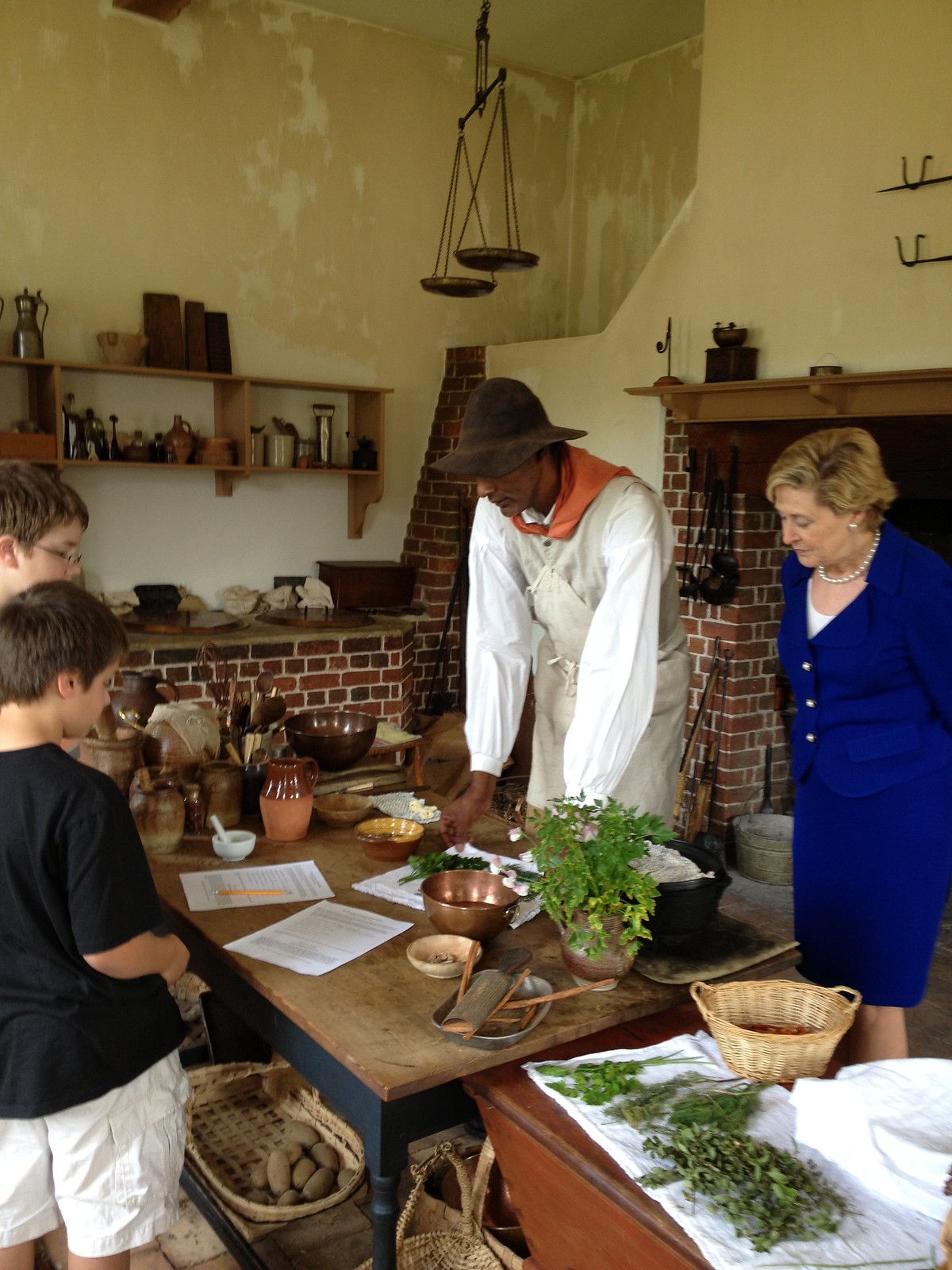 Sec. Kluttz watches re-enactors in action
Sec. Kluttz watches re-enactors in action
 Sec. Kluttz watches re-enactors in action
Sec. Kluttz watches re-enactors in action
 Sec. Kluttz holds a piece of pottery used by slaves before the Civil War
Sec. Kluttz holds a piece of pottery used by slaves before the Civil War
 Sec. Kluttz with Tryon Palace historic interpreter Haron Beatty in the Palace kitchen
Sec. Kluttz with Tryon Palace historic interpreter Haron Beatty in the Palace kitchen
The New Year started off with a bang as a crowd of more than 5,000 people turned out at Fort Fisher State Historic Site in Kure Beach Saturday for the 148th anniversary of the Civil War battle that took place there.
Editor's Note – In the summer of 2012, Ansley Wegner, a historian with our Research Branch, wrote a series of blog posts highlighting various historical destinations around the state. This is the fifteenth post in that series.
Rose O’Neal Greenhow was a widowed Washington socialite turned Confederate spy. While well known for her pro-states’ rights and slavery expansionist views, she also maintained friendly relationships with leaders from the North.
The website for North Carolina Historic Sites “invites you to open doors into the past.” But near the Moore County town of Carthage at the House in the Horseshoe, you don’t even have to open the doors to be transported back to the reality of the Revolutionary War in North Carolina.
The CSS Neuse will begin a three-mile journey from its current home at the CSS Neuse/Gov. Caswell Memorial to a new, custom-built, climate controlled building at 100 N. Queen St., in downtown Kinston.
Underwater archaeology in North Carolina has received a lot of press lately thanks to the Queen Anne’s Revenge project. But the state’s Underwater Archaeology Branch (UAB) actually got its start because of a ship that went down 150 years ago this month—the Confederate blockade runner Modern Greece.
On June 2 and 3, hundreds of people transported themselves into the past at the annual Great Southeastern Rail Days Festival at the N.C. Transportation Museum in Spencer, but for one Rowan County family that trip had special significance.